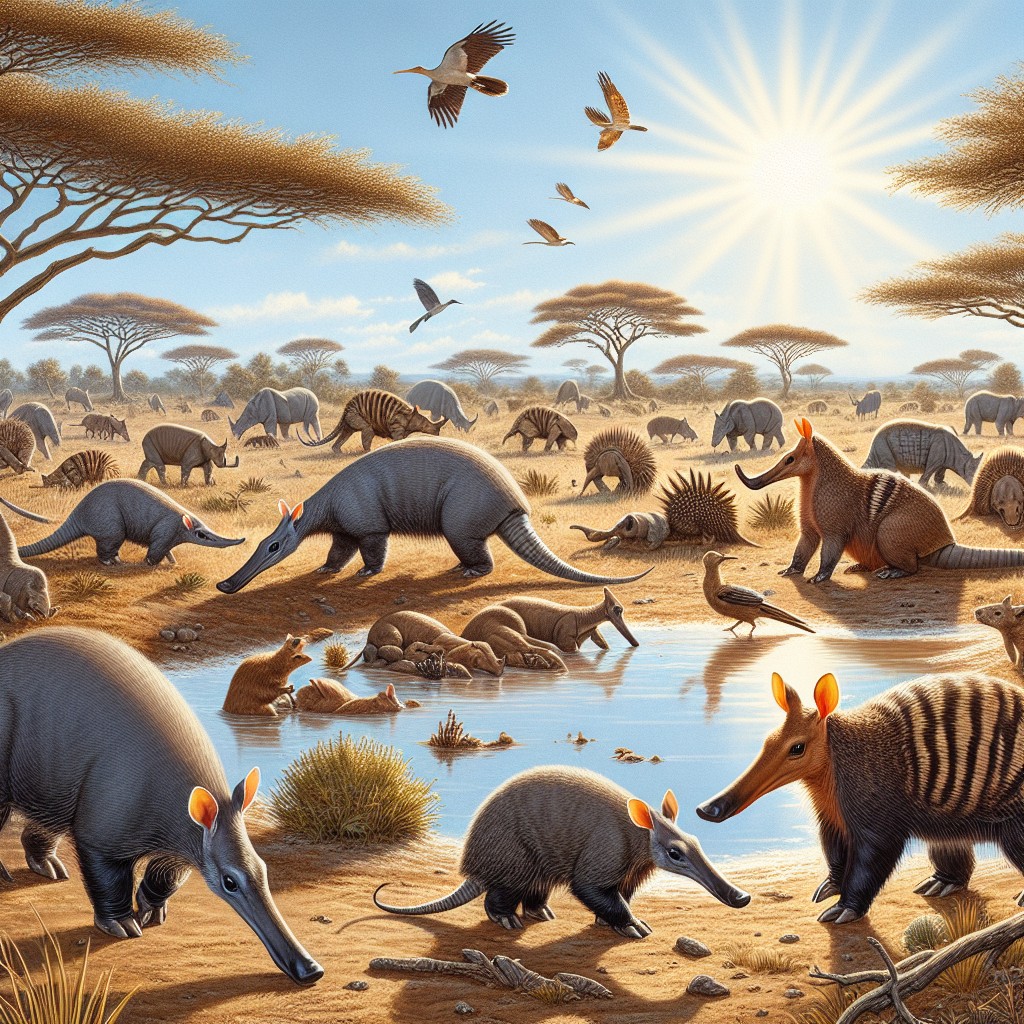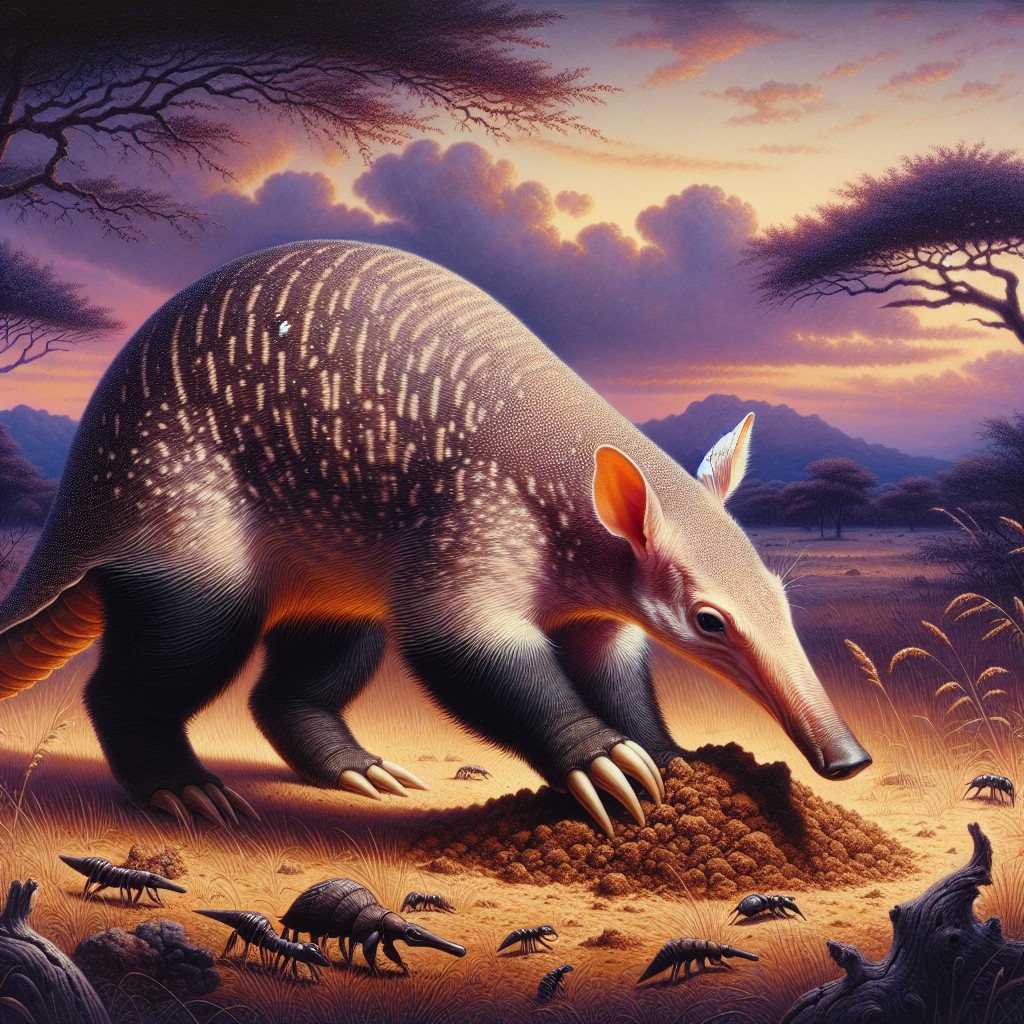
Tubulidentata is a small and enigmatic order of mammals that consists of only one living species, the aardvark (Orycteropus afer). Aardvarks are unique creatures that have captured the curiosity of scientists and researchers for centuries. They are native to Africa and are known for their distinctive appearance and unusual habits. Studying aardvarks is not only fascinating but also important for understanding the evolution of mammals.
Summary
- Tubulidentata is a mysterious order of aardvarks that has unique features that make them stand out.
- Aardvarks have evolved over time and have a unique anatomy that makes them stand out from other animals.
- Aardvarks are found in the wild in specific habitats and have unique behavioural patterns.
- Aardvarks have an unusual diet that defies classification and have unique reproductive and social behaviours.
- Aardvarks are significant in African folklore and mythology, but they face conservation challenges that require efforts to protect them.
Evolutionary Origins of Aardvarks: A Journey through Time
The fossil record of aardvarks and their ancestors provides valuable insights into their evolutionary origins. Fossils dating back millions of years have been discovered in various parts of Africa, revealing the gradual development of the aardvark’s unique adaptations. These adaptations allowed them to survive and thrive in their environment.
One of the most notable features of aardvarks is their long snouts, which are perfectly designed for their diet and lifestyle. Their snouts are equipped with powerful claws that enable them to dig burrows and search for food. These adaptations have been refined over millions of years, making aardvarks highly efficient in their daily activities.
Anatomy of Aardvarks: Unique Features that Make Them Stand Out
Aardvarks have several physical characteristics that make them stand out among other mammals. Their long snouts, as mentioned earlier, are one such feature. These snouts are not only used for digging burrows but also for locating food. Aardvarks have an excellent sense of smell, which helps them detect ants and termites from a distance.
Another unique feature of aardvarks is their powerful claws. These claws are used not only for digging but also for defense against predators. Aardvarks are known to be strong fighters when threatened, using their claws to fend off attackers. Additionally, aardvarks have long ears and a thick skin that protects them from insect bites and scratches while digging.
Aardvarks in the Wild: Habitat, Distribution, and Behavioural Patterns
| Aardvarks in the Wild: Habitat, Distribution, and Behavioural Patterns |
|---|
| Habitat |
| Aardvarks are found in a variety of habitats, including savannas, grasslands, woodlands, and forests. |
| Distribution |
| Aardvarks are native to Africa and can be found in sub-Saharan Africa, from Senegal to Ethiopia and down to South Africa. |
| Behavioural Patterns |
| Aardvarks are nocturnal and solitary animals. They are primarily insectivores and use their long, sticky tongues to capture ants and termites. They are also known for their ability to dig burrows, which they use for shelter and protection. |
Aardvarks are found throughout sub-Saharan Africa, inhabiting a range of habitats including savannas, grasslands, and woodlands. They are primarily nocturnal creatures, spending their days in burrows and emerging at night to search for food. Aardvarks are solitary animals and are rarely seen in groups.
Their burrowing behaviour is one of the most fascinating aspects of aardvark behaviour. They dig extensive burrow systems that can be up to 13 meters long and have multiple entrances. These burrows provide shelter from predators and also serve as a place for aardvarks to rest during the day.
Feeding Habits of Aardvarks: An Unusual Diet that Defies Classification
Aardvarks have a highly specialized diet consisting mainly of ants and termites. They are considered insectivores but their feeding habits are quite unique. Aardvarks use their powerful claws to break open termite mounds and ant hills, exposing the insects inside. They then use their long, sticky tongues to lap up the insects.
Despite their reliance on ants and termites, aardvarks do not have any teeth. Instead, they have a series of tubular teeth that are continuously growing throughout their lives. These teeth are made of dentine, a soft material that wears down quickly when eating insects. As a result, aardvarks have to constantly grind their teeth against each other to keep them sharp.
Reproduction and Social Behaviour of Aardvarks: Insights from Field Studies
Aardvarks have unique reproductive habits that have been studied extensively in the wild. They have a polygynous mating system, where one male mates with multiple females. Mating usually occurs during the dry season when food is scarce, ensuring that the offspring are born during the rainy season when food is abundant.
The gestation period of aardvarks is approximately seven months, after which a single offspring is born. The mother aardvark will nurse and care for the young in the burrow for several months before it becomes independent. Aardvarks are known to be protective parents, fiercely defending their young from predators.
Aardvarks in Culture and Mythology: Significance in African Folklore
Aardvarks hold significant cultural and mythological importance in African folklore. In many African cultures, aardvarks are seen as symbols of strength, resilience, and adaptability. They are often associated with the spirit world and are believed to possess supernatural powers.
In addition to their cultural significance, aardvarks have also been portrayed in art and literature. They have been depicted in various forms of African art, including sculptures and paintings. Aardvarks have also made appearances in African folktales and children’s books, captivating readers with their unique characteristics.
Threats to Aardvarks: Conservation Challenges and Efforts
Despite their cultural significance, aardvarks face numerous threats to their survival. Habitat loss due to human activities such as agriculture and urbanization is one of the biggest challenges for aardvark conservation. As their natural habitats are destroyed, aardvarks are forced to adapt to new environments or face extinction.
Another threat to aardvarks is hunting for bushmeat and traditional medicine. In some parts of Africa, aardvark meat is considered a delicacy and their body parts are believed to have medicinal properties. This has led to illegal hunting and trade of aardvarks, further endangering their populations.
Efforts are being made to protect aardvarks and their habitats. Conservation organizations are working with local communities to raise awareness about the importance of aardvarks and the need for their conservation. Protected areas are being established to safeguard aardvark populations and their habitats.
Aardvarks in Captivity: Challenges and Opportunities for Research and Education
Keeping aardvarks in captivity presents several challenges due to their unique dietary needs and behavioural patterns. Aardvarks require a diet that closely resembles their natural food sources, including a variety of insects. Providing this diet can be challenging, as it requires careful planning and sourcing of insects.
However, studying aardvarks in captivity also presents opportunities for research and education. Researchers can closely observe their behaviour and study their biology in a controlled environment. This can provide valuable insights into their reproductive habits, social behaviour, and other aspects of their lives that are difficult to study in the wild.
Future Directions in Aardvark Research: Unravelling the Mysteries of this Enigmatic Order
There are still many unanswered questions about aardvarks that require further research. For example, scientists are interested in understanding the genetic makeup of aardvarks and how it has contributed to their unique adaptations. They also want to investigate the ecological role of aardvarks in their habitats and how they interact with other species.
In conclusion, aardvarks are fascinating creatures that have captivated the attention of scientists, researchers, and artists alike. Studying aardvarks is not only important for understanding the evolution of mammals but also for conserving these unique animals and their habitats. Continued research and conservation efforts are crucial for unraveling the mysteries of this enigmatic order and ensuring the survival of aardvarks for future generations.
FAQs
What is Tubulidentata?
Tubulidentata is a mammalian order that includes only one living species, the aardvark. They are found in sub-Saharan Africa and are known for their long snouts and sticky tongues.
What is an aardvark?
An aardvark is a nocturnal mammal that is native to Africa. They are known for their long snouts, which they use to sniff out ants and termites, and their sticky tongues, which they use to capture their prey.
What do aardvarks eat?
Aardvarks primarily eat ants and termites, which they capture using their sticky tongues. They can eat up to 50,000 insects in a single night.
What is the habitat of aardvarks?
Aardvarks are found in sub-Saharan Africa, where they inhabit a variety of habitats, including savannas, grasslands, and forests. They are nocturnal and spend most of their time in burrows during the day.
What are the physical characteristics of aardvarks?
Aardvarks have long, tubular snouts that they use to sniff out ants and termites. They also have long, sticky tongues that they use to capture their prey. They have large, rabbit-like ears and a thick, armored hide that protects them from predators.
What is the lifespan of an aardvark?
Aardvarks can live up to 23 years in the wild, although their lifespan is typically shorter due to predation and habitat loss.
Are aardvarks endangered?
Aardvarks are not currently considered endangered, although their populations are declining due to habitat loss and hunting. They are listed as a species of least concern by the International Union for Conservation of Nature.



